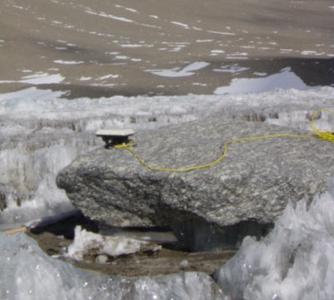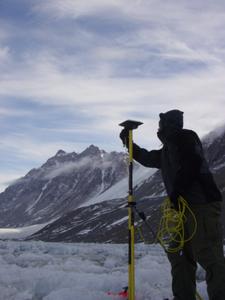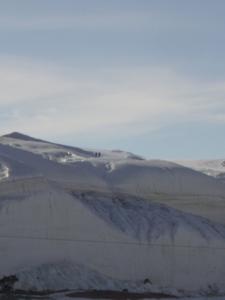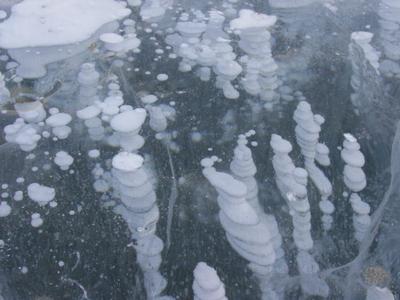15 November, 2003
Rock and Roll!
Temperature: 16*F
Location: Canada Glacier / Lake Hoare, Dry Valleys
We are trying to wrap up all our business here so we can move to Lake
Fryxell on Monday. If all goes well, we may even have a few minutes to
sneak a hike up behind the mountain in search of the "Rock Garden."
This is an area where the winds have sculpted remarkable shapes into the
rocks.
Roman and I started the day by doing a "food pull." Our team will be
out in the field for at least another seven days; we obviously need to
have food. Roman and I planned the next several meals and then gathered
the items needed to make those meals from the supplies here at camp.
The Lake Hoare camp has several "buildings" to go along with the camping
sites. There is one main building which serves as the galley, "lounge"
area, computer center, and general common area. There are a few other
buildings here also; there is an instrument lab, a chemistry lab, a tool
shed, and a "shower" room; we're actually allowed one shower a week
here! In these buildings are several storage areas where food is
stored. The camp manager, Rae, and her assistant, Nevada, helped us
"pull" all the food needed for the next several days.
Next, Roman went to help Phil break down and put away the generator
which had provided the power to successfully melt cables which had been
frozen into the ice. I joined up with a man named Bjorn, from
Colorado. The LTER group has brought Bjorn in to run precision GPS
instruments to assist in monitoring the movement of boulders on the lake
ice. Yes, the boulders are moving. Remember the surface ice is melting
at different rates depending on what type of material (sand, rock, snow,
etc.) is covering the ice in each spot. This difference in melting
rates causes a VERY uneven surface to form. The large boulders don't
melt the ice as fast as the smaller ones, so often the large boulders
will end up elevated on "pedestals" of ice, while the surface ice around
them gets eroded away. Eventually these boulders will tumble off their
higher ground and shift to a new location. The scientists are using the
shifting rates to help them determine the ablation rates at that part of
the lake. The researchers can also use the GPS readings from previous
years to determine the distance and direction of movement across the lake.
Bjorn and I went on a boulder hunt. The boulders in question have been
tagged and plotted into the GPS system. All we had to do was follow the
GPS signal from one boulder to another. This sounds like an easy task,
and on flat ground it would be; but everything is harder in Antarctica!
Traversing back and forth across Lake Hoare is no easy task! The
surface of the lake is like a maze with pyramid shaped ice mounds
blocking the way through. Walking across this lake consists of hoping
from one "crest" of ice to another and scampering up and down ice
pyramids!
Once we found the tagged boulder, Bjorn placed a satellite antennae
either directly on the rock or on a pole above the rock. Where the
antennae was placed depended on the ability of the antennae to receive a
signal from the satellites. We successfully plotted the new locations
of these rocks using a GPS system that is accurate to within one
centimeter! Now this years data can be entered into the existing data
pool and the scientists can start looking for trends.
Antarctica gives "bouldering" a whole new meaning! Still having the
time of my life!

1. An ice "pyramid" from the maze of Lake Hoare's ice surface.

2. The GPS used to locate the tagged boulders.

3. Boulder with the satellite antennae place on it's surface. Can you also see the "pedestal" of ice underneath the rock?

4. Installing the satellite antennae on a pole to mark the rock's position.

5. The edge of the Canada Glacier... can you see the two people on the top, close to center?

6. Gas bubbles trapped in the ice!
Contact the TEA in the field at
.
If you cannot connect through your browser, copy the
TEA's e-mail address in the "To:" line of
your favorite e-mail package.
|
